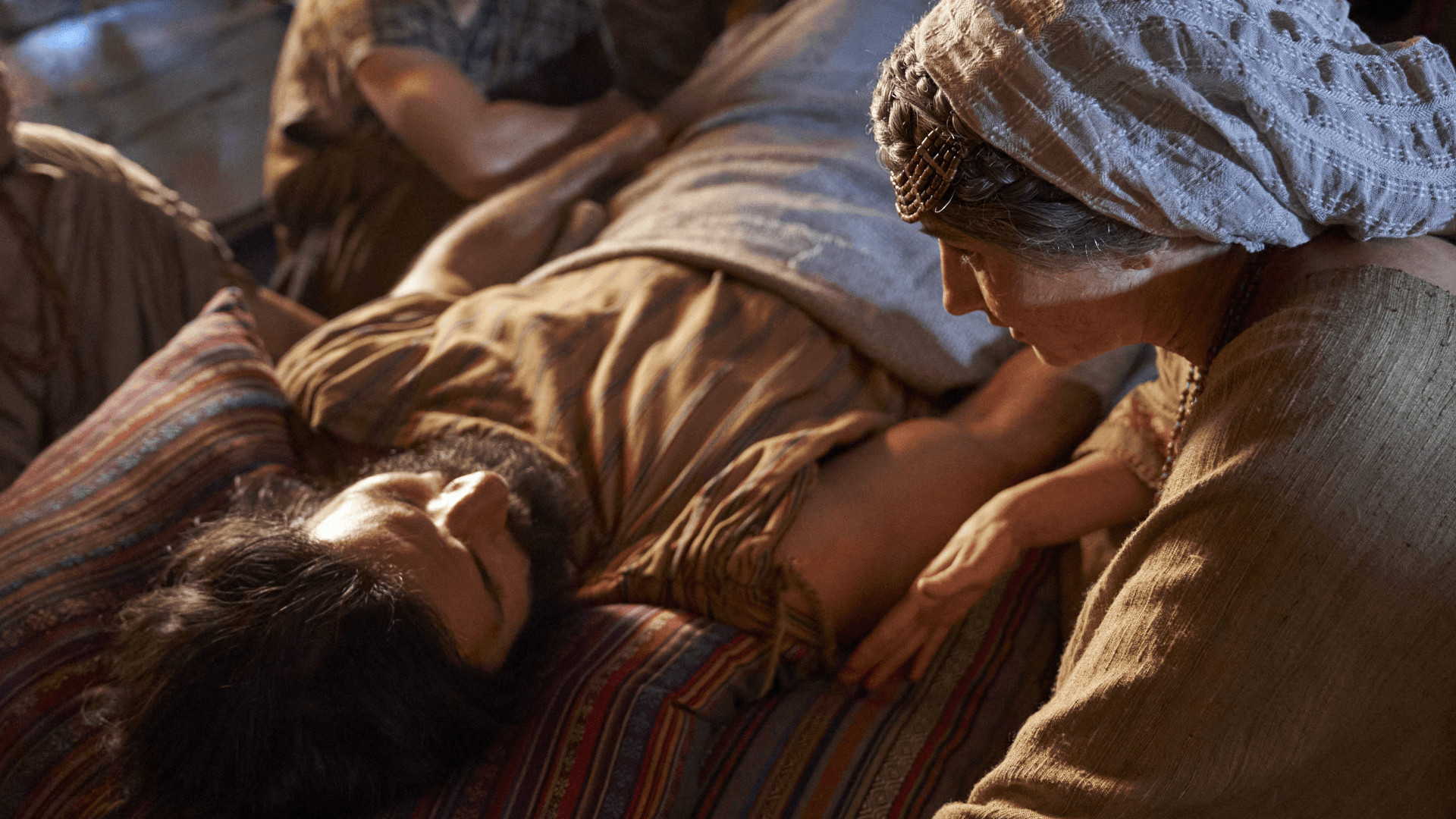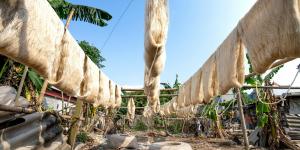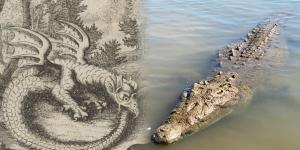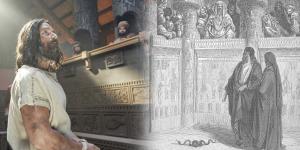You are here
Why Do So Many People in the Book of Mormon Fall to the Earth as if Dead?

Mosiah 27:18–19
The Know
The Book of Mormon recounts many miraculous healings (whether physical or spiritual), divine commissions, and combinations of such experiences. A shared feature in some of these healings is a miraculous manifestation of the Lord’s power that leaves individuals falling to the ground as if they were dead. This is notably true regarding Alma and the sons of Mosiah, but is also evident in other miraculous healings, such as with Lamoni and Ammon as well as Lamoni’s father and Aaron.1
This particular detail of falling to the earth may seem unfamiliar or strange to modern readers of the Book of Mormon. However, as Mark Alan Wright observed, “ethnographic work among traditional societies has shown that holy men of various types—broadly referred to as shamans—commonly receive their calling through near-death experiences” not unlike those experienced by people in the Book of Mormon. Specifically, in Indigenous Mesoamerican societies, holy men known as curanderos (meaning “curers, or healers”) would typically receive a calling to this holy position through similar experiences.2 When the typical curandero experience is examined side-by-side with the experiences of those who fell down as if dead in the Book of Mormon, the similarities are more evident and provide important context through which to understand the Nephite prophets’ lives and ministries.
As noted by Frank J. Lipp, many healers in Mesoamerica, including many practicing today, are called through a form of “divine election.” These healers receive their call “within the context of some physical or emotional crisis,” which can include “a severe, chronic, or life-threatening sickness.” During this time, the healer-to-be receives instructions from a “higher spiritual being,” such as an angel or a god, before being healed themselves. Furthermore, the initiate “may experience temporary insanity or unconsciousness, and a death experience whereupon he or she is reborn as a person with shamanic power and knowledge.”3
Wright observes, “The healing process is often aided by the prayers and ritual actions of another curandero on behalf of the critically ill individuals.”4 Following their healing, the initiate undergoes “a lengthy period of self-learning or apprenticeship at the side of an experienced family member or older shaman,” after which “the newly called shamans possess a power and authority that is recognized by the members of their community.”5 This call may be refused, but refusal often “results in worsening sickness or death.”6
Parallels between these accounts of shamanic callings and Book of Mormon accounts of individuals being physically or spiritually healed abound and begin with the book’s first recorded instance of individuals falling to the earth—namely, Alma and the sons of Mosiah.7 This experience was told and alluded to repeatedly throughout Alma’s life, and each retelling offered new key details with a striking level of consistency.8
According to the Book of Mormon, “the angel of the Lord appeared unto [Alma and the sons of Mosiah]; and he descended as it were in a cloud; and he spake as it were with a voice of thunder, which caused the earth to shake upon which they stood” (Mosiah 27:11). The group fell to the earth at this manifestation, and “the astonishment of Alma was so great that he became dumb, that he could not open his mouth; yea, and he became weak, even that he could not move his hands; therefore he was taken by those that were with him, and carried helpless, even until he was laid before his father” (Mosiah 27:19).
Instead of worrying for his son, Alma the Elder “rejoiced, for he knew that it was the power of God” (Mosiah 27:20). He also “caused that the priests should assemble themselves together; and they began to fast, and to pray to the Lord their God that he would open the mouth of Alma, that he might speak, and also that his limbs might receive their strength—that the eyes of the people might be opened to see and know of the goodness and glory of God” (Mosiah 27:22). Through this action, Wright suggests, “these priests were acting in their capacity as curanderos, or healers.”9
In this state of unconsciousness, Alma later explained, “I was racked with eternal torment, for my soul was harrowed up to the greatest degree and racked with all my sins,” and even wished that “I could be banished and become extinct both soul and body, that I might not be brought to stand in the presence of my God, to be judged of my deeds” (Alma 36:12, 15).10 However, after remembering the teachings of his father concerning Jesus Christ, he was delivered from his pain and suffering. Furthermore, he recorded, “Methought I saw, even as our father Lehi saw, God sitting upon his throne, surrounded with numberless concourses of angels, in the attitude of singing and praising their God; yea, and my soul did long to be there” (Alma 36:22).
When he awoke, Alma also declared, similar to a healed curandero, “I have repented of my sins, and have been redeemed of the Lord; behold I am born of the Spirit” (Mosiah 27:24). However, this miraculous healing did not constitute the only action in his calling to be a prophet and spiritual healer for the people. Alma later recollected that he had “fasted and prayed many days that I might know these things of myself” (Alma 5:46). Furthermore, it is likely that his father continued to play an important role in his training. Alma the Elder is recorded as having “conferred the office [of high priest] upon him [Alma the Younger], and having given him the charge concerning all the affairs of the church” (Mosiah 29:42).
Wright observed, “Because Alma had been healed, both body and soul, he now possessed a culturally recognized power to heal. This recognition would have extended beyond just the believing Nephites who had a clear understanding of the priesthood that Alma held (see Alma 13).”11 This power was first exhibited when Alma encountered a repentant Zeezrom, who was “scorched with a burning heat” that was caused by “the great tribulations of his mind on account of his wickedness” when he lived in Ammonihah (Alma 15:3). He sought healing from both Alma and Amulek, but “the only one to take Zeezrom by the hand was Alma, as he had become the culturally (and spiritually) recognized healer by virtue of his own near-death experience.”12 Thus, through the priesthood and his faith in Christ, Zeezrom was healed.13
This pattern of healing is also found prominently in the ministry of Ammon.14 Having similarly received a calling through the initial visitation of an angel, Ammon also exhibited the power and ability to heal others. For example, after preaching to King Lamoni, the king prayed, “O Lord, have mercy; according to thy abundant mercy which thou hast had upon the people of Nephi, have upon me, and my people. And now, when he had said this, he fell unto the earth, as if he were dead” (Alma 18:41–42). After the king had remained for two days and two nights in this unconscious state many assumed was death, Ammon declared that the king would arise the next day, recognizing that this was the effect of “the dark veil of unbelief … being cast away from his mind” (Alma 19:6).15 Lamoni awoke as Ammon declared, stating, like Alma, “I have seen my Redeemer; and he shall come forth, and be born of a woman, and he shall redeem all mankind who believe on his name” (Alma 19:13).
This experience caused many Lamanites to fall to the earth as if dead and to receive a spiritual healing as Lamoni had. Ammon also fell to the earth in this unconscious state, a detail which may seem odd to modern readers; however, it would have fit in with Ammon’s role as a curandero. As noted by Lipp, “the ability to cure illnesses of increasing severity” becomes greater with each time the healer falls unconscious and recovers.16 Hence, “rather than being viewed as a sign of physical weakness or perhaps a case of spiritual hypersensitivity,” this and other instances of falling unconscious “would actually have imbued him with more spiritual potency as a holy man.”17
The Why
Some who are skeptical of the Book of Mormon’s ancient origins have assumed that Alma’s conversion experience is merely a copycat of the Apostle Paul’s experience on the road to Damascus or that the motif of people falling unconscious to the earth is a reflection of behavior at nineteenth-century revival camps. Yet the information and careful analysis offered by Mark Alan Wright illustrate that that cases of falling to the earth as if dead followed by a miraculous healing are actually more similar to experiences found in Indigenous American contexts. This information can shed new light on these unusual experiences reported in the Book of Mormon
As the prophet Nephi declared, “the Lord God giveth light unto the understanding; for he speaketh unto men according to their language, unto their understanding” (2 Nephi 31:3).18 Thus, patterns that may seem odd or foreign to modern readers may only feel that way because of a difference in cultural understandings and practices. As we explore the Book of Mormon as an ancient text and seek to understand the contexts and cultures probably familiar to Book of Mormon authors, we will be better able to understand many incidents in the book.
It must be understood, however, that it was not near-death experiences that gave Book of Mormon prophets and leaders their authority. In every case of miraculous healings reported in the Book of Mormon, priesthood power had still been previously bestowed by one who was called of God and would have therefore had the priesthood authority to do so: Alma the Younger had been set apart as the high priest by his father (see Mosiah 29:42), and the sons of Mosiah would have received similar authority from their father, who had been authorized by the Lord to “let them go up … to preach the word among the Lamanites” (Mosiah 28:7, 9). Even if such callings may have mirrored the broader culture surrounding the Nephites, the possession of true priesthood power demonstratively set them apart from curanderos and other healers and was ever present in the Book of Mormon accounts.19
Because the authority and keys of the priesthood were restored through Joseph Smith and Oliver Cowdery, the priesthood power of God can be administered on the earth today in our own cultural language. As we rely on the priesthood and those ordained of God to use it, we can be blessed, finding healing and knowing that God will speak to us in familiar ways.
Further Reading
Mark Alan Wright, “Nephite Daykeepers: Ritual Specialists in Mesoamerica and the Book of Mormon,” in Ancient Temple Worship: Proceedings of the Expound Symposium, 14 May 2011 (Orem, UT: Interpreter Foundation; Salt Lake City, UT: Eborn, 2014), 243–257.
Mark Alan Wright, “‘According to Their Language, unto Their Understanding’: The Cultural Context of Hierophanies and Theophanies in Latter-day Saint Canon,” Studies in the Bible and Antiquity 3 (2011): 51–65.
- 1. For Alma and the sons of Mosiah, see Mosiah 27:18–19; for Lamoni and Ammon, see Alma 18–19; for Lamoni’s father and Aaron, see Alma 22:17–22. In the account of Jesus’s visit to the Americas in 3 Nephi, Jesus healed many people, and the multitudes bowed down before Him. While not necessarily linked, this does provide an interesting parallel. See Matthew L. Bowen, “‘They Came Forth and Fell Down and Partook of the Fruit of the Tree’: Proskynesis in 3 Nephi 11:12–19 and 17:9–10 and Its Significance,” in Third Nephi: An Incomparable Scripture, ed. Andrew C. Skinner and Gaye Strathearn(Salt Lake City, UT: Deseret Book; Provo, UT: Neal A. Maxwell Institute for Religious Scholarship, 2012), 107–130.
- 2. Mark Alan Wright, “Nephite Daykeepers: Ritual Specialists in Mesoamerica and the Book of Mormon,” in Ancient Temple Worship: Proceedings of the Expound Symposium, 14 May 2011, ed. Matthew B. Brown, Jeffrey M. Bradshaw, Stephen D. Ricks, and John S. Thompson (Orem, UT: Interpreter Foundation; Salt Lake City, UT: Eborn, 2014), 248.
- 3. Frank J. Lipp, “A Comparative Analysis of Southern Mexican and Guatemalan Shamans,” in Mesoamerican Healers, ed. Brad R. Huber, and Alan R. Sandstrom (Austin, TX: University of Texas Press, 2001), 103–104.
- 4. Wright, “Nephite Daykeepers,” 249.
- 5. Lipp, “Comparative Analysis,” 103; see Wright, “Nephite Daykeepers,” 249.
- 6. Lipp, “Comparative Analysis,” 103.
- 7. Wright, “Nephite Daykeepers,” 249, notes: “It would be a mistake to place physical and spiritual healing in separate categories; the two concepts are equated in scripture and in the ancient mind.” Wright draws upon passages such as 3 Nephi 18:32, which states that Jesus desires all to “return and repent, and come unto me with full purpose of heart, and I shall heal them.”
- 8. S. Kent Brown, “Alma’s Conversion: Reminiscences in His Sermons,” In The Book of Mormon: Alma, The Testimony of the Word, ed. Monte S. Nyman and Charles D. Tate Jr. (Provo, UT: Religious Studies Center, Brigham Young University, 1992), 141–156; Book of Mormon Central, “Why Are There Multiple Accounts of Joseph Smith’s and Alma’s Visions? (Alma 36:6–7),” KnoWhy 264 (January 20, 2017).
- 9. Wright, “Nephite Daykeepers,” 250.
- 10. Alma notes that “for the space of three days and three nights that I could not open my mouth, neither had I the use of my limbs” (Alma 36:10). This experience of a divine intervention followed by three days of some physical infirmity has often been compared to Saul’s experience on the road to Damascus. However, significant variations between the two stories demonstrate that Alma’s experience was targeted to him given his New World understanding. As noted by Wright, “the New Testament account of Saul’s conversion experience on the road to Damascus (Acts 9:3–9) may bear superficial similarities to Alma’s experience in the Book of Mormon, but there is a significant difference. We have no record that Saul had a near-death experience in the sense that his soul embarked on a spirit journey while his body lay suffering (as did Alma and Lamoni), which is a defining factor in Mesoamerican shamanic calls.” Wright, “Nephite Daykeepers,” 251. See also Alan Goff, “Alma’s Prophetic Commission Type Scene,” Interpreter: A Journal of Latter-day Saint Faith and Scholarship 51 (2022): 115–164.
- 11. Mark Alan Wright, “‘According to Their Language, unto Their Understanding’: The Cultural Context of Hierophanies and Theophanies in Latter-day Saint Canon,” Studies in the Bible and Antiquity 3 (2011): 61.
- 12. Wright, “According to Their Language,” 62.
- 13. Other hints that Alma was spiritually recognized as a Mesoamerican healer can be found in his knowledge of the cosmos in Alma 30:44 and the observation that plants were prepared by the Lord for the healing of the people in Alma 46:40. Oftentimes, ritual healers in Mesoamerica “tracked the cycles of planets, had their own set of constellations, and were even able to predict eclipses,” and they also “believe medicinal plants were provided by the gods for the purpose of healing.” Wright, “Nephite Daykeepers,” 247, 253.
- 14. Ammon’s brother Aaron would have a similar experience when teaching Lamoni’s father, who likewise “was struck as if he were dead” before Aaron “put forth his hand and raised the king from the earth” (Alma 22:18, 22; see verses 17–22 for the full account).
- 15. Wright, “Nephite Daykeepers,” 251, observes, “The similarity between Lamoni’s and Alma’s experiences demonstrates the larger cultural language that was shared by Nephites and Lamanites in their ancient Mesoamerican setting.”
- 16. Lipp, “Comparative Analysis,” 104. This detail stands true today for healers among the Tzotzil Maya of Chamula.
- 17. Wright, “Nephite Daykeepers,” 252.
- 18. See Book of Mormon Central, “Why Does the Lord Speak to Men ‘according to Their Language’? (2 Nephi 31:3),” KnoWhy 258 (January 6, 2017).
- 19. Similarly, Moses and Aaron performed signs recognizable (and, in some cases, repeatable) by the Egyptian priests, yet the power of God was manifestly greater than that of the false priests (see Exodus 7–12). The miracles of healing in the Book of Mormon were likewise performed by the power and priesthood of God for the benefit of His children, distinct from any seemingly similar powers of false priests.
KnoWhy Citation
Related KnoWhys
Subscribe
Get the latest updates on Book of Mormon topics and research for free





